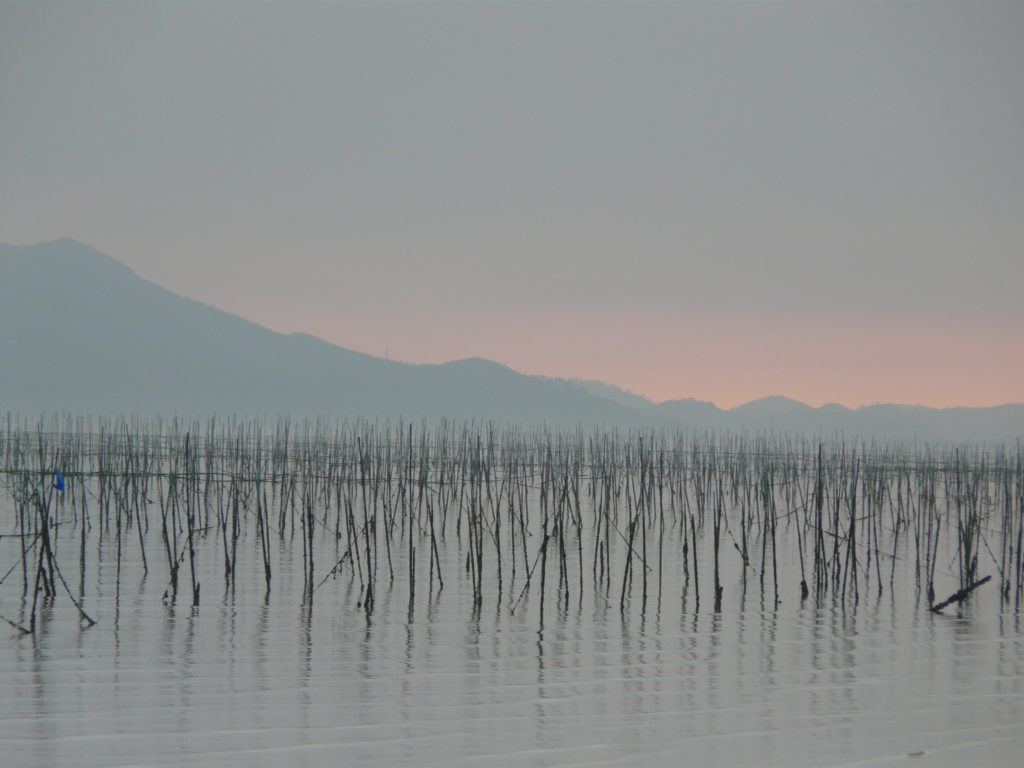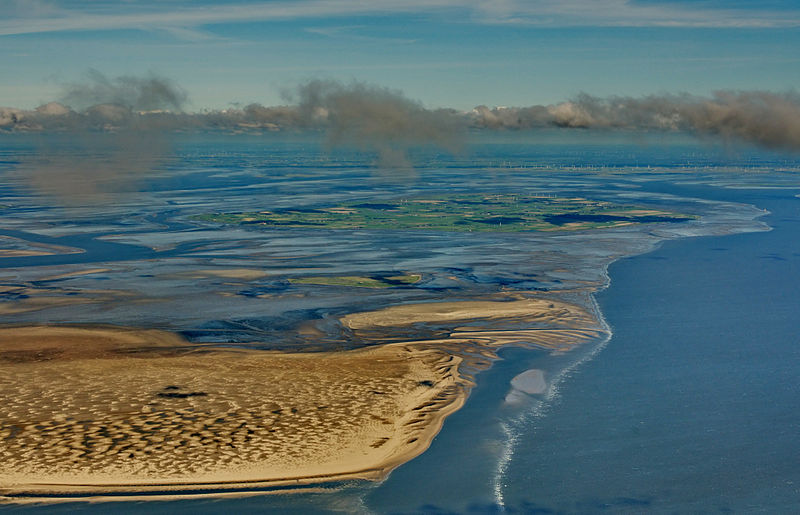By:Coastal Connections- IHR Partnership Seminar: Young Rae Choi[1], Michael O´Rourke[2], Katie Ritson[3], Hsinya Huang[4] and Joana Gaspar de Freitas[5]
Coasts are highly dynamic environments. Their constant mutability is what defines them best. However, they seem to be disappearing—shrinking, and vanishing—worldwide. The lack of sand, shoreline erosion, reclamation and sea-level rise put the coasts as we know them at risk. Many natural factors interplay to explain the situation, but a full understanding can only be achieved by looking at human history. The risks and challenges ahead must also be acknowledged and addressed. On February 25, four scholars, each with a different disciplinary background, joined virtually to discuss “vanishing coasts”; how societies have been coping with them over time; and what past legacies can teach us for the future. From East Asia to the Arctic, Northern Europe and the Pacific Islands, they talked about ancestral sites and colonial settlements, physical and literary places, indigenous narratives, poetry and slippery tidal flats.

Figure 1: Getbol, South Korea, Young Rae Choi
Young Rae Choi works on getbol of South Korea. Getbol refers to vast and flat coastal wetlands shaped by tidal forces. Getbol is a distinctive geographical feature of the Yellow Sea that is shallow, semi-enclosed, and receives an enormous amount of sediment from its rivers. Given that about 40-70% of the getbol that existed at the dawn of the 20th century is now lost due to coastal development, getbol seems to be an exemplary “vanishing coast.” The main cause of getbol’s loss, Rae explained, has been reclamation, which turned the wetlands into rice paddies, industrial complexes, harbors, and cities. The stories found in reclamation sites, however, tell us that a getbol does not “vanish” mysteriously or instantly. In the case of Saemangeum, South Korea’s largest reclamation site, a series of mass deaths of marine life such as clams, fish, and shorebirds took place over several years. The failures in coastal ecosystems also caused the disconnection of human-sea relations and, ultimately, the death of humans. Some local fishers turned opportunistic to extract the remaining marine creatures in destructive ways, while the changes in the geographies of getbol drowned fishers in places they had been familiar with all their lives. These stories, said Rae, tell not only that it is both coastal landscapes and coastal cultures and histories that are lost; but also the questions about deliberate or indirect intervention, change, and destruction of the coasts remain relevant and crucial, much as their loss should be mourned. (Figure 1)

Figure 2: Tuktoyaktuk community in the Beaufort Sea, Michael O’Rourke
Michael O’Rourke also talked about loss. His work as an anthropological archaeologist is connected to the Inuvialuit cultural landscapes of western Inuit Nunangat (Canada). These are increasingly threatened by the cumulative effects of anthropogenic climate change, including sea level rise, shoreline erosion and melting permafrost—a situation which staff at the Prince of Wales Northern Heritage Centre (PWNHC) have sought to address since the territorial Archaeology Program was first established in 1982. Even at this early stage, the involvement of Inuvialuit in the conservation of ancestral sites was deemed an essential aspect of the management process. Michael stressed that, while new technologies and methods are being deployed by the PWNHC, the focus on community involvement in the management process has remained a priority and will play a critical role in the delivery of value-centred heritage programmes and services in the years ahead. (Figure 2)

Figure 3: The Wadden Sea, Rolf Roletscheck
The Wadden Sea is one of the largest expanses of tidal mudflats in the world and a critical habitat for breeding and migrating birds in particular. For Katie Ritson, the history of the Wadden Sea is one of constant change, both sudden and slow; storm floods, siltation, erosion. It‘s a vulnerable coast in terms of climate change, but the coast won‘t vanish—it will just move, as it has done many times before. To see this kind of vulnerability, she pointed, requires us to care about the coast in the first place: the sense of urgency surrounding the Wadden Sea is the force behind both new dikelines to protect human settlements and the inscription of the Wadden Sea in the United Nations World Heritage List in recognition of its ecological value to the world. In her research, Katie is looking at the representations of the Wadden Sea in texts and artwork from across the region. These are an opportunity for people (including those who don’t live on or even near the coast) to rethink its value, to take on board the richness of its ecology and history and the need to protect it. In a strange way, Katie noted, the fictional coasts are becoming sturdier and more real as the physical coasts are threatened with losses. (Figure 3)
For Hsinya Huang, coasts are highly complex frontier systems defined by their rich diversity and large productivity. They are privileged spaces for the exchange of resources and energy. From Taiwan, Pescadores Archipelago, and Orchid Island (Pongso no Tau), to Marshall Islands, Guam, Japan archipelago, and Greenland, the Pacific islands’ coastal connections have empowered, inspired, enriched, and rescued people. In her presentation, she demonstrated how the shorelines in the Pacific are populated with beautifully crafted canoes, migrant birds, and rich biodiversity, while eroded and degraded by nuclear militarism. Through reading Pacific Islander literature, Hsinya examined the interwoven relationship along the shorelines of the Pacific islands, which bespeaks enormous desire to be connected and to enter into relations with one another. For Hsinya, “vanishing coasts” mean vanishing biological and cultural diversities. Her talk concluded that the coasts embody an entangled world of human and non-human beings, a “meshwork” which in effect creates “new possibilities for the flourishing of life along diverse lines”. The interactions and interchanges between the human and non-human species shape the coasts into a rich terrain of indigenous sovereignty, which heals and takes care, providing nourishment for body, mind and spirit. Coasts then symbolize situated connectivities that bind us into multi-species communities. The islands face similar erosion and degradation in their coasts, but they endeavor to preserve and reconnect.

Figure 4: Orchid Island shoreline, Hsinya Huang
In the discussion, the interveners concluded that coastal erosion, coastline retreat, flooding are natural processes. Coasts are not really vanishing, but changing as they have been over millennia in response to sea-level rise and other forcing mechanisms. The problem is that, as they change, identities, ways of life, cultures and ecologies are lost. The idea of “vanishing” comes from this sense of loss: a loss of something we value and cherish. Acknowledging the tangible and intangible coastal heritage of the Inuit, the getbol communities, the Wadden Sea populations and the Pacific indigenous people shifts our angle of reference and, as it does so, opens up an alternative vision of space and place, time and history. The Anthropocene as a new marker in human history is an opportunity to critically engage with “fundamental questions of meaning, value, responsibility and purpose”[1]. We have to find new ways of being at the coast. By establishing more equitable comparisons and networks, places like islands and coats offer valuable lessons as to how we can see ourselves as oceanic citizens as much as earth-dwellers. (Figure 4)
[1] Sabine Wilke, “Anthropocenic Poetics: Ethics and Aesthetics in a New Geological Age”, In: Helmuth Trischler (ed.), Envisioning the Future of the Age of Humans. RCC Perspectives 3 (2013): 67 apud Katie Ritson, The Shifting Sands of the North Sea Lowlands. Literary and Historical Imaginaries (London and New York: Routledge, 2019), p. 13.
[1] Florida International University, USA. [2] Prince of Wales Northern Heritage Centre, Northwest Territories, Canada. [3] Rachel Carson Center, Germany. [4] National Sun Yat-Sen University, Taiwan. [5] University of Lisbon, Portugal. Corresponding author: jgasparfreitas@letras.ulisboa.pt

